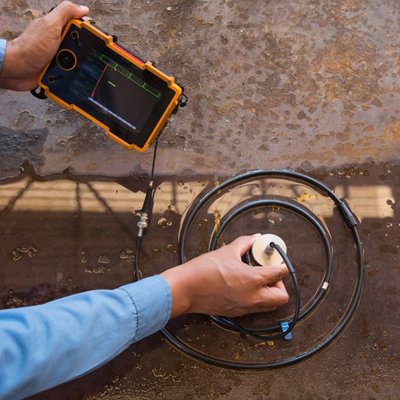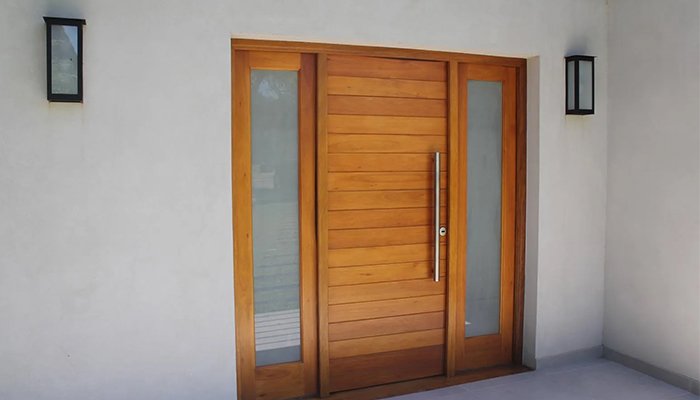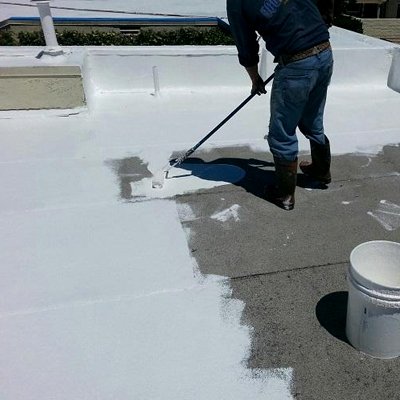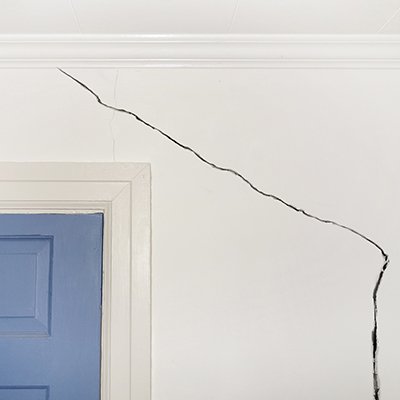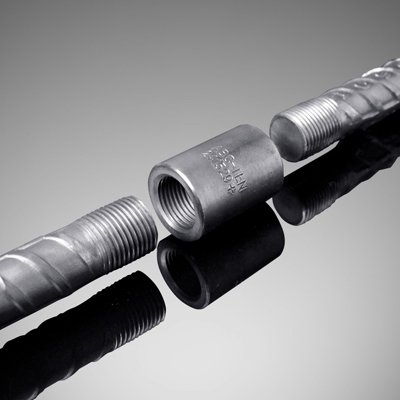NON DESTRUCTIVE TESTING
3. Pull-Out Tests on Concrete:
The pull-out technique can measure quantitatively the in-situ strength of concrete when proper correlations have been made. The concrete is simultaneously in tension and in shear, but the force required to pull the concrete out can be related to its compressive strength. Although pull-out tests do not measure the interior strength of mass concrete, they do give information on the maturity and development of strength of a representative part of it. Such tests have the advantage of measuring quantitatively the strength of concrete in place. Their main disadvantage is that they have to be planned in advance and pull-out assemblies set into the formwork before the concrete is placed. The pull-out, of course, creates some minor damage.
4. Ultrasonic Pulse Velocity Test:
Ultrasonic Pulse Velocity (UPV) test is a non-destructive evaluation method for assessing the quality of concrete homogeneity, changes in the structure of the concrete which may occur with time, presence of cracks, voids and other imperfections, quality of one element of concrete in relation to another etc. The underlying principle of assessing the quality of concrete is that comparatively higher velocities are obtained when the quality of concrete in terms of density, homogeneity and uniformity is good. In case of poorer quality, lower velocities are obtained. If there is a crack, void or flaw inside the concrete which comes in the way of transmission of the pulses, the pulse strength is attenuated and it passes around the discontinuity, thereby making the path length longer.
The pulse velocity method has been used to study the effects on concrete of freeze-thaw action, sulphate attack, and acidic waters. Generally, the degree of damage is related to a reduction in pulse velocity. Cracks can also be detected.
The pulse velocity method can also be used to estimate the rate of hardening and strength development of concrete in the early stages to determine when to remove formwork. Holes have to be cut in the formwork so that transducers can be in direct contact with the concrete surface. Test Method: IS-13311(part-1):1992
5. Radioactive Methods of NDT:
Radioactive methods of testing concrete can be used to detect the location of reinforcement, measure density and perhaps establish whether honeycombing has occurred in structural concrete units. Concrete up to 18 in. (45 cm) thick can be examined without difficulty.
Conclusion
With so many different techniques, each having their own characteristics, some of them might be perfectly suitable for certain applications but utterly ineffective in other cases. For example, some methods are limited to surface examination while others allow a complete volumetric inspection. The different types of non-destructive testing are often complementary. As a result, we can exploit the advantages of combined techniques. Consequently, choosing the appropriate method is a very important step for optimizing the performance of an NDT inspection, it is thus essential to be well advised when preparing the inspection plan.

